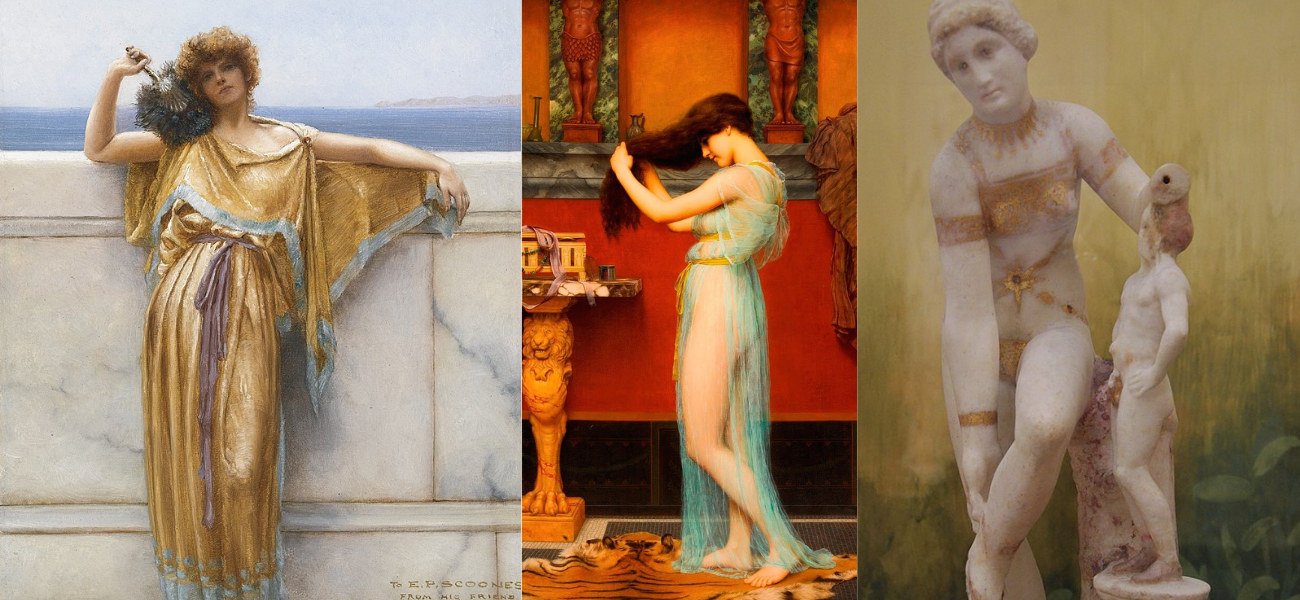- May 23, 2025

Lingerie in the Ancient World: Greece, Rome, and Egypt
Long before lace and elastic, women in Egypt, Greece, and Rome used wraps and bands to support their bodies with comfort and grace. This story explores how ancient lingerie reflected a deep respect for natural form, practicality, and beauty.
Lace, cotton, bralettes, or corsets are typically what come to mind when we think of lingerie.
But what was before all of this?
When there were no sewing machines, elastic fabrics or other fashion companies, how did women take care of their bodies, comfort, and of course hygiene?
The truth is more fascinating than you might think.
Lingerie for women was around thousands of years ago, but it didn’t look anything like it now.
Explore the cultures of ancient Egypt, Greece, and Rome to learn how women valued their bodies and appearance even before the days of underwire and padded bras.
Egypt: Linen, Heat, and Simplicity
Ancient Egyptian women lived in a harsh, hot environment where clothes served primarily as cooling and sun protection rather than as a source of warmth.
They didn’t dress in lingerie as we know it now. Rather, they wore long tunics, thin linen wraps, or breast bands, all of which were far more exposed than we may think now and incredibly light and breathable.
Key features:
- The primary fabric was linen, which was prized for its breathability.
- The breasts were slightly visible, which was usual.
- The fabric, which is occasionally embellished with embroidery or gold, is more delicate and sheer for women of higher income.
The focus was on the natural look of the body, not reshaping it.
Egyptian Scene from Tomb-Chapel of Nebamun, Thebes (Luxor), c. 1350 BC Ancient Egypt Gallery, British Museum, London, England, UK.

Greece: The Strophion — The First “Bra”
The ancient Greeks placed a high importance on balance and harmony, and this idea permeated even their underwear.
One of the first bra prototypes, the strophion, was discovered in Greece.
Usually worn underneath clothes, this fabric band was wrapped around the chest and occasionally worn over them for strenuous activities like dancing or sports.
Why women wore the strophion:
- to provide breast support when moving.
- to gently mold the body without confining it.
- for practicality and daily comfort.
Usually made of wool or linen, the materials were natural and delicate. A lengthy piece knotted around the chest made up the basic form.
Fun fact: Sculptures and artwork from antiquity frequently show athletic goddesses or women with strophions, demonstrating that the item was powerful and useful at the time.
Rome: Comfort with a Greek Influence
Many of the Greeks’ clothing customs, especially their undergarments, were passed down to Roman women.
Additionally, they wore mamillare and strophions, which are variations of the chest band.
Other Roman “lingerie” items included:
- A subligaculum is a loincloth or short skirt that is knotted around the hips; it is the forerunner of underwear.
- The Roman equivalent of a slip or chemise, the tunica interior is a light tunic worn underneath the main garment.
Though not to the same extent as in later ages, modesty became more culturally valued in Rome than in Egypt.
Roman lingerie gave women some flexibility and comfort, but it still had to be practical, tidy, and culturally acceptable.

What Did These Ancient Civilizations Have in Common?
- The purpose of lingerie was practical, not ornamental.
- Instead of supporting an altered body, it supported the body’s original form.
- 100% natural materials were used, such as linen, wool, and even silk for the affluent.
- Women’s figures were not defined by underwear — but by how garments were wrapped and worn.
Why Does This Era Matter?
Because the body was seen as attractive rather than shameful in the ancient world.
Lingerie was created to support you, to serve your life, not to alter your appearance.
Clothing used to envelop the body rather than limit it.
And this exact philosophy is returning today, with soft bralettes, seamless underwear, breathable fabrics, and lingerie made to be lived in.
🔗 In the next part of the series, we’ll explore how lingerie disappeared from sight — but not from life — during the Middle Ages. Stay tuned!
With love for timeless beauty,
Your Moonlit Team
